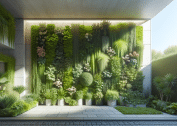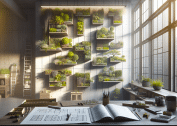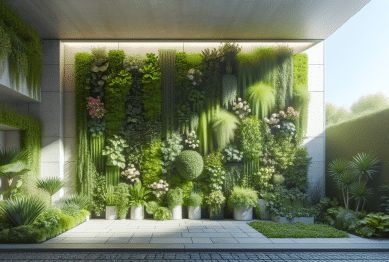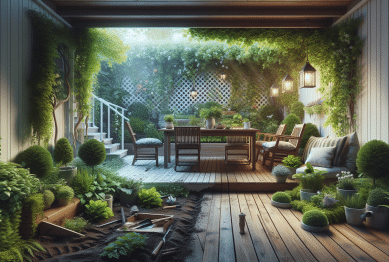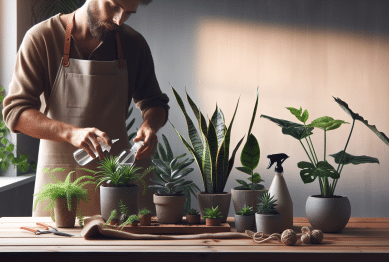Explore how sustainable gardening can transform your home environment, boost property value, and enhance daily well-being. This article shows practical strategies for designing an eco-friendly garden, conserving water, and selecting the right plants to create a thriving home oasis.
Understanding Sustainable Gardening for Your Home
Sustainable gardening isn’t just a trend—it’s a practical solution for anyone interested in reducing their environmental footprint while creating a beautiful living space. The concept revolves around using resources efficiently, improving soil health, and supporting local biodiversity. You might notice some neighbors introducing native plants or drought-tolerant options, which not only thrive with minimal intervention but also help decrease water and chemical usage. A sustainable home oasis begins with understanding how small decisions make a big difference over time. For example, adjusting watering practices or composting kitchen scraps adds up, supporting healthier plant growth naturally. It’s a rewarding routine that supports both the gardener and the local ecosystem.
Many home gardeners today want to minimize the use of synthetic fertilizers and pesticides. These can affect both the immediate environment and the larger community. Embracing regenerative techniques, such as mulching or interplanting, can make a lawn or garden more resilient to pests and less dependent on chemical input. The result? Healthier plants, cleaner water runoff, and often, a more attractive landscape overall. Since more homeowners are making these shifts, access to resources and advice has grown—look for local extension offices or community workshops offering hands-on examples of sustainable gardening in action.
Adopting sustainable gardening practices also improves the value and appeal of a property. Environmental efficiency is now a major selling point, with buyers ready to pay more for homes demonstrating a commitment to eco-friendly living. Features like rainwater catchment, edible landscaping, and pollinator habitats often catch the attention of real estate agents. With an increasing demand for sustainable solutions, learning these essential gardening principles is not only beneficial for the earth but can result in tangible benefits for homeowners and communities.
Designing an Eco-Friendly Garden Space
Smart garden design starts with observation. Notice areas that get the most sun, spots that stay damp, and where wind tends to gather. These details influence plant choice and layout for sustainability. Grouping plants by their watering needs—hydrozoning—minimizes waste and ensures every species thrives. Paths, patios, and seating areas can be built from repurposed or locally sourced materials, reinforcing eco-friendly credentials while enhancing beauty. There’s a synergy between environmental responsibility and stylish design, and both can be achieved with thoughtful planning.
Including native plants is an easy win for eco-conscious gardeners. These species are well-adapted to local climate and soil, making them more resilient and less reliant on chemical inputs. Native trees and shrubs also support wildlife, from birds to pollinators, who have evolved to rely on these species for food and shelter. Choosing a variety of plants creates a layered, year-round garden—flowers in spring, berries in summer, or interesting bark in winter. This biophilic approach keeps the space visually interesting while reducing the maintenance burden.
For those with limited space, vertical gardening offers an innovative solution. Living walls, trellises, and hanging pots make use of unused vertical surfaces, increase growing area, and improve air quality. Indoor gardens positioned near windows harness sunlight for kitchen herbs or leafy greens. Opting for modular, movable planters enhances flexibility without requiring major renovations. Even modest additions, like a window herb box, bring a touch of sustainability to smaller homes or apartments, showing that any space can contribute to a greener environment.
Water Conservation Techniques for Home Gardens
Smart irrigation systems and water-saving practices are vital for creating a sustainable home oasis. Drip irrigation, for example, delivers water directly to plant roots, minimizing surface evaporation. Mulching with leaves, bark, or compost also helps keep soil moist and reduces the need for frequent watering. Collecting rainwater is a common practice—using barrels or underground cisterns ensures that gardens get a steady supply even in dry seasons. These simple approaches preserve both natural resources and household budgets over time.
More homeowners are discovering the advantage of greywater systems, which recycle gently used water from sinks or washing machines for irrigation. Proper installation and plant selection are essential for safety and effectiveness, as only certain species are suitable for this water. Combining these with traditional conservation strategies, like watering early in the day and fixing leaks promptly, can cut water waste dramatically. Creating shaded areas with trees or pergolas further reduces water loss by lowering soil temperature.
Planning a garden to maximize rainfall absorption offers great payoffs. Swales and rain gardens, strategically placed to catch stormwater runoff, filter and slow the flow so it soaks deeply into the ground. This reduces erosion and recharges groundwater supplies. Lawns with deep-rooted native grasses retain more water compared to conventional turf. These adaptations mean usable outdoor space remains lush even during occasional drought or water restrictions, all while supporting healthier local watersheds.
Enhancing Soil Health Organically
Healthy soil is the foundation for any thriving home garden. Adding organic matter, such as compost or well-rotted manure, improves soil structure, promotes beneficial organisms, and boosts fertility. Regularly rotating crops or including ground covers prevents nutrient depletion and keeps soil ecology diverse. Avoiding soil compaction by using raised beds or limiting heavy traffic on planting areas also encourages strong, deep root development.
Cover cropping is another technique gaining traction in both rural and urban settings. By planting fast-growing species like clover or vetch, gardeners add nutrients and organic matter while reducing weeds and soil erosion. These ‘green manures’ can be mixed into the soil before new crops are put in, enriching the ground and providing a steady source of slow-release nutrients. The end result is softer, richer earth that holds moisture better and supports a healthier plant community.
Organic fertilizers, compost teas, and microbial inoculants have become more accessible for home gardeners looking for alternatives to synthetic chemicals. Resources, such as local gardening groups or cooperative extensions, provide advice on making or sourcing these amendments. With the right organic inputs and a focus on soil ecology, gardens become less susceptible to disease and pests, resulting in a stronger, more resilient oasis all year round.
Selecting Plants for Climate Resilience
Plant selection plays a huge role in the long-term success and sustainability of a home oasis. Climate-resilient plants can handle occasional temperature swings, droughts, and heavy rainfall without constant intervention. Many universities and local extensions publish lists of suitable species, guiding homeowners to choices that will thrive in specific regions. Combining evergreen shrubs, perennial flowers, and drought-tolerant ground covers provides continuity and reduces replanting needs.
Edible landscaping is another smart approach for those who want aesthetics and productivity in the same space. Fruit trees, berry bushes, and kitchen herbs support pollinators while offering fresh, homegrown produce. Many modern varieties are bred for both ornamental value and culinary quality. Interspersing ornamental and edible plants also deters some pests and attracts beneficial insects, reducing dependence on pesticides and chemical treatments over time.
Xeriscaping is a landscaping philosophy focused on minimal water use, and it has moved from arid regions into mainstream gardening. By grouping drought-resistant plants, mulching extensively, and choosing tough, locally adapted species, xeriscapes create stunning visuals with very low maintenance. Homeowners aiming for true sustainability can adopt these principles in full or simply incorporate drought-tolerant choices into existing landscapes, offering flexibility and broad appeal.
Daily Habits That Support a Sustainable Home Oasis
Small, consistent actions have an outsized impact when it comes to sustainable gardening. Composting food scraps and yard waste diverts materials from landfills while generating nutrient-rich amendments right at home. Regularly checking irrigation systems, clearing debris, and practicing integrated pest management prevent issues from escalating without chemicals. Engaging in these routines fosters a sense of stewardship and pride, making the garden a true extension of sustainable living values.
Community resources often become invaluable. Local gardening clubs, seed swaps, and public demonstration gardens offer knowledge and inspiration for anyone interested in improving their gardening skills. Sharing tools or participating in cooperative efforts—like neighborhood pollinator gardens—spreads the impact of sustainability well beyond any single property. These connections can motivate ongoing learning and provide support during seasonal gardening challenges.
Documentation helps track progress and celebrates small wins. Keeping a garden journal, snapping photos, or comparing year-to-year harvests demonstrates how sustainable practices add up. Over time, gardens evolve, reflecting careful choices and ongoing commitment. This visible progress encourages homeowners to continue exploring new methods, try different plants, and stay engaged with sustainable gardening trends, cementing a positive legacy for the home and environment alike.
References
1. United States Environmental Protection Agency. (n.d.). Green Landscaping: Greenacres. Retrieved from https://www.epa.gov/greenacres
2. National Wildlife Federation. (n.d.). Sustainable Gardening Practices. Retrieved from https://www.nwf.org/Garden-for-Wildlife/Sustainability
3. University of California Agriculture and Natural Resources. (n.d.). Water-wise Gardening. Retrieved from https://ucanr.edu/sites/scmg/Water-wise_Gardening/
4. U.S. Department of Agriculture. (n.d.). Native Plants for Sustainable Landscapes. Retrieved from https://www.nrcs.usda.gov/wps/portal/nrcs/detail/plantmaterials/technical/publications/?cid=nrcs143_013697
5. Missouri Botanical Garden. (n.d.). Composting at Home. Retrieved from https://www.missouribotanicalgarden.org/Portals/0/Gardening/Gardening_Advice/Tips/Composting.pdf
6. Xerces Society for Invertebrate Conservation. (n.d.). Pollinator Conservation. Retrieved from https://xerces.org/pollinator-conservation


